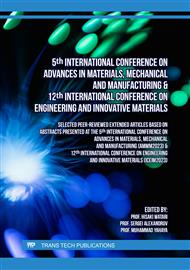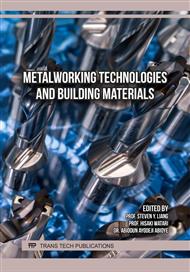p.3
p.9
p.15
p.27
p.35
p.43
p.51
p.59
Reduction of Surface Cracking for Al-4.6%Mg Strips Cast Surface Using an Unequal-Diameter Twin-Roll Caster by Back-Dam Plate with Lip
Abstract:
Cracks occur on the surface of Al-Mg strips cast using a high-speed twin-roll caster. Surface cracking of the as-cast strip decreases with decreasing roll load. However, the difficulty of roll casting increases as the roll load is decreased because the strip becomes brittle and is easily broken because the strip is not completely solidified. In the present study, an unequal-diameter twin-roll caster, which is capable of high-speed casting, was used with a lip attached to a back-dam plate in an attempt to decrease surface cracking without deceasing the roll load. The thickness of the solidified layer was found to decrease as the length of the solidified region decreased. The thickness of the solidified layer at the center of the width direction of a strip on the lower roll decreased by shortening the solidification length by a lip attached to a back dam-plate. The solidified layer at the edges was thicker than that inside the cast strip. The thickness of semisolid metal inside the cast strip increased more than that at the edges of the roll bite. The roll load at the width of the lip decreased. The effect of the lip length on surface cracks was investigated.
Info:
Periodical:
Pages:
9-14
Citation:
Online since:
March 2024
Authors:
Price:
Сopyright:
© 2024 Trans Tech Publications Ltd. All Rights Reserved
Share:
Citation:



